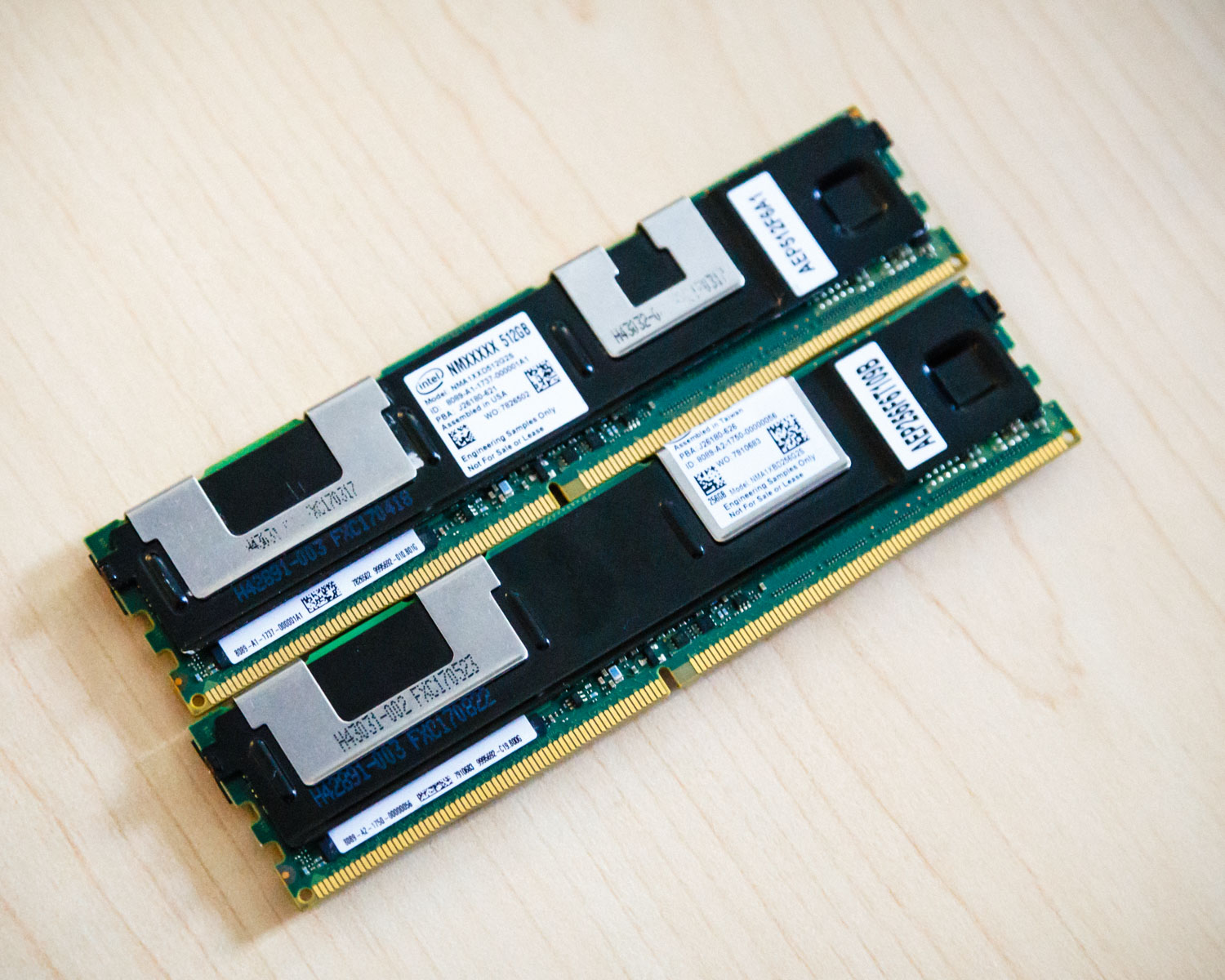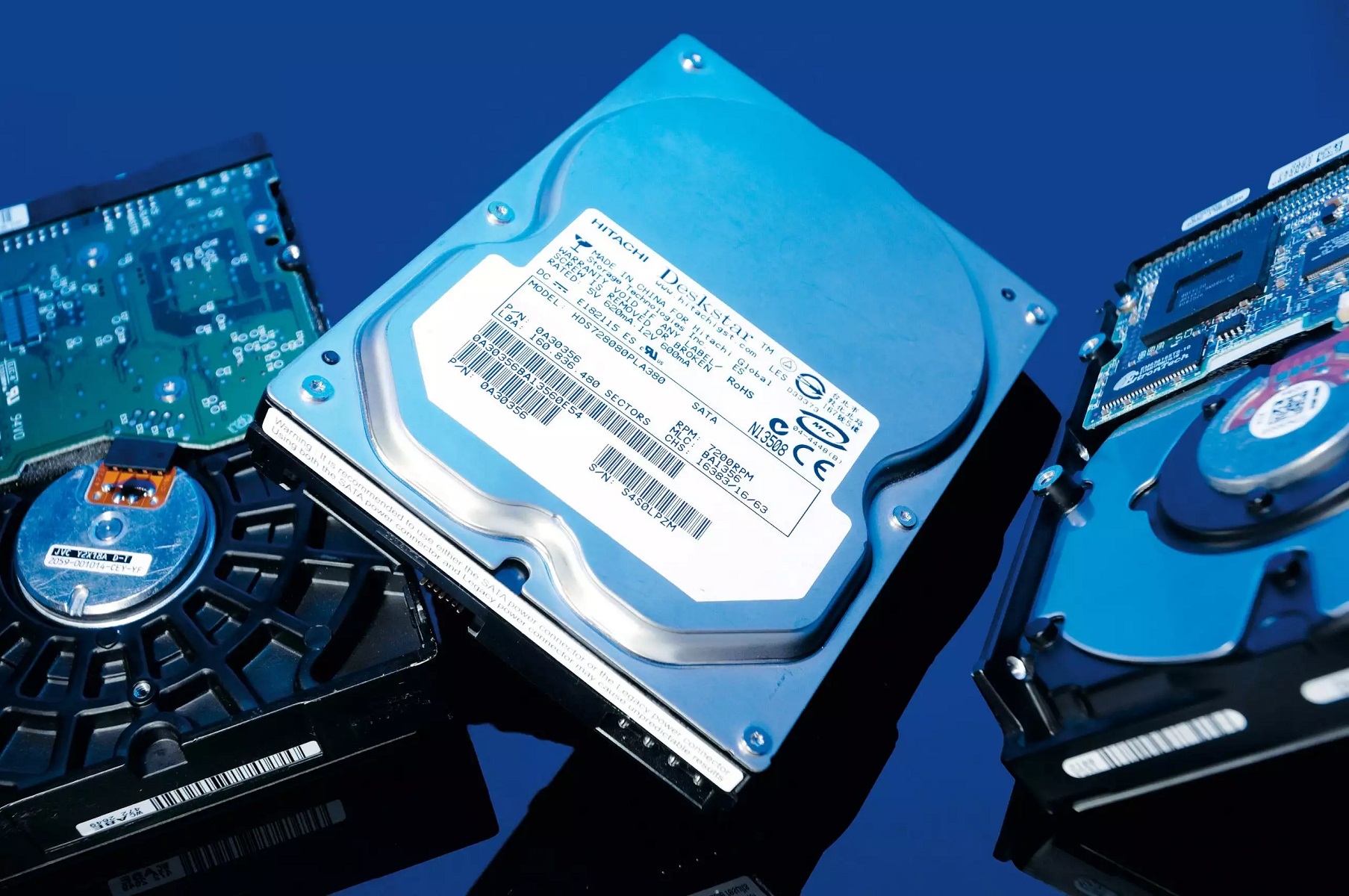

Articles
What Is Persistent Storage
Modified: January 21, 2024
Learn about persistent storage and its importance in data storage. Discover how it ensures data durability and availability for long-term storage needs.
(Many of the links in this article redirect to a specific reviewed product. Your purchase of these products through affiliate links helps to generate commission for Storables.com, at no extra cost. Learn more)
Introduction
Persistent storage plays a crucial role in the digital landscape, providing a means to store and retrieve data reliably over extended periods. In the fast-paced world of technology, where data is constantly being generated, accessed, and managed, the need for persistent storage solutions has become increasingly important. From personal files and documents to the vast amount of data stored by businesses, persistent storage ensures that valuable information remains accessible and secure.
At its core, persistent storage refers to the ability to retain data even when power is lost and can be categorized as long-term storage compared to temporary storage, such as random-access memory (RAM). In a digital context, persistence is achieved through various storage mediums and technologies, each catering to different use cases and requirements.
The importance of persistent storage cannot be overstated. It serves as the foundation for data management and enables efficient workflows, disaster recovery, and scalability. Without reliable and accessible persistent storage, organizations would face the risk of losing critical data, resulting in compliance issues, financial loss, and reputational damage.
There are several types of persistent storage options available, each with its own unique characteristics and advantages. Filesystems, databases, key-value stores, and object storage are some of the most common types that cater to different data storage and retrieval needs. Understanding the capabilities and trade-offs of each option is essential for making informed decisions when choosing the appropriate persistent storage solution.
When evaluating persistent storage options, it is important to consider factors such as scalability, performance, durability, and cost. Different use cases will have varying requirements in terms of data size, read and write operations, access patterns, and budget. By understanding these factors and aligning them with specific use cases, organizations can choose the most suitable persistent storage solution that meets their needs.
In this article, we will explore the various types of persistent storage options, their advantages and disadvantages, and the factors to consider when choosing the right solution. Whether you are an individual looking to store personal files or a business seeking scalable and reliable storage for your data, understanding persistent storage is fundamental to efficient data management.
Key Takeaways:
- Understanding the importance of persistent storage is crucial for efficient data management, ensuring data integrity, reliability, and scalability across diverse use cases in the digital landscape.
- When choosing a persistent storage solution, considering factors such as data size, access patterns, scalability, and cost is essential to align the storage solution with specific data management needs and future growth projections.
Read more: What Is A Tb Storage
Definition of Persistent Storage
Persistent storage refers to the ability to store and retrieve data over extended periods, even in the absence of power or system restart. Unlike temporary storage solutions, such as random-access memory (RAM), which only hold data temporarily while the system is running, persistent storage ensures that information remains intact and accessible even after a system shutdown.
In the digital world, persistent storage is a fundamental aspect of data management. It allows for the reliable and durable storage of files, documents, databases, and other forms of digital information. Whether it is personal files stored on a computer or vast amounts of data managed by businesses, persistent storage serves as a long-term repository for valuable information.
To achieve persistence, data is typically stored on physical storage devices such as hard disk drives (HDDs), solid-state drives (SSDs), or optical discs. These devices utilize magnetism, electrical charges, or laser technology to write and read data on a physical medium. Additionally, advancements in cloud computing have introduced virtualized persistent storage solutions, allowing data to be stored and accessed remotely over the internet.
One key aspect of persistent storage is that it preserves the data’s state, meaning that the information stored remains the same even when it is not actively accessed or modified. This feature is crucial for scenarios where data needs to persist over long periods, such as archiving historical records or storing critical business data for future analysis.
Persistent storage can take different forms depending on the requirements of the data and the intended use case. Filesystems, databases, key-value stores, and object storage are some common types of persistent storage solutions, each with its own unique characteristics and benefits. These solutions provide different levels of data organization, access methods, and scalability options to cater to diverse storage needs.
In summary, persistent storage is a vital component of data management, ensuring that data remains available and secure even in the face of power loss or system restarts. By utilizing technologies and storage mediums designed for long-term retention, organizations can effectively store and retrieve data as needed, enabling seamless workflows, data analysis, and decision-making processes.
Importance of Persistent Storage
Persistent storage is of paramount importance in the digital age, where data has become the lifeblood of businesses and individuals alike. It provides a means to store and preserve valuable information over extended periods, ensuring data accessibility, reliability, and security. The importance of persistent storage can be understood through the following key aspects:
- Data Integrity: Persistent storage ensures that data remains intact and unchanged even in the event of power outages, system failures, or restarts. This is critical for maintaining data integrity and accuracy, especially for long-term storage needs. Without persistent storage, data could be lost or corrupted, leading to significant consequences and potential liabilities.
- Data Availability: By utilizing persistent storage solutions, organizations can ensure that data is always available for retrieval and processing. Whether it’s accessing personal files, retrieving critical business data, or serving content to users, persistent storage enables seamless data availability, eliminating the risk of data loss and downtime.
- Data Reliability: Persistent storage solutions are designed to provide reliable and durable storage. This is achieved through redundant storage mechanisms, data replication, and error-correcting techniques. Reliable data storage is essential for businesses that rely on accurate and consistent data for decision-making, compliance, and customer satisfaction.
- Data Security: Persistent storage allows for the implementation of robust security measures to protect sensitive data. Encryption, access controls, backups, and disaster recovery strategies can be implemented to safeguard data stored in persistent storage solutions. This is crucial for organizations that handle confidential or regulated data and need to meet compliance requirements.
- Scalability and Flexibility: Persistent storage solutions provide the scalability and flexibility needed to accommodate growing data needs. As the volume of data increases, organizations can easily expand their storage capacity without disruption. This allows for seamless scalability, enabling businesses to adapt to changing data storage requirements.
Overall, the importance of persistent storage lies in its ability to provide data integrity, availability, reliability, security, and scalability. Without reliable and accessible persistent storage, organizations risk losing critical data, facing compliance issues, and hampering their business operations. It is essential for businesses and individuals to invest in reliable persistent storage solutions that meet their specific needs and ensure the long-term preservation and accessibility of their data.
Types of Persistent Storage
Persistent storage encompasses various types of storage solutions, each tailored to specific use cases and data management needs. Understanding the different types of persistent storage is crucial for selecting the most suitable solution for your requirements. Here are some common types of persistent storage:
- Filesystems: Filesystems are a common form of persistent storage used for organizing and storing files on a storage device. They provide a hierarchical structure for organizing data into directories and files. Filesystems are widely used in operating systems and provide features such as file permissions, access control, and file metadata. Examples of popular filesystems include NTFS (Windows), ext4 (Linux), and HFS+ (Mac OS).
- Databases: Databases are specialized persistent storage solutions designed for efficient data retrieval and management. They provide structured storage for organizing data into tables with relationships, indexes, and query capabilities. Databases offer ACID (Atomicity, Consistency, Isolation, Durability) properties to ensure data integrity. Popular database management systems include MySQL, PostgreSQL, Oracle, and MongoDB.
- Key-Value Stores: Key-value stores are simple and scalable persistent storage options that store data in a key-value format. Each value is associated with a unique key, allowing for fast retrieval and storage of data. Key-value stores are often used for caching, session storage, and high-speed data access. Examples include Redis, Apache Cassandra, and Riak.
- Object Storage: Object storage is a scalable and highly reliable form of persistent storage that stores data as objects in a flat address space. Each object contains both data and metadata, making it suitable for storing unstructured data such as images, videos, and documents. Object storage provides high durability and availability, making it ideal for cloud storage and content distribution. Popular object storage services include Amazon S3, Google Cloud Storage, and Microsoft Azure Blob Storage.
Each type of persistent storage solution offers distinct advantages and trade-offs. Filesystems provide a familiar hierarchical structure for file organization but may lack scalability for large datasets. Databases offer powerful data management capabilities but require structured data and can be more complex to set up and maintain. Key-value stores offer simplicity and scalability at the expense of advanced querying capabilities. Object storage excels in scalability and durability for unstructured data but may have slower access times compared to databases.
It’s important to evaluate the specific requirements of your data, such as access patterns, scalability needs, and data relationships, when choosing the appropriate type of persistent storage. By selecting the right solution, you can optimize data management, ensure data integrity, and provide efficient access to your valuable information.
Filesystems
Filesystems are one of the most common types of persistent storage solutions, used to organize and store files on storage devices such as hard disk drives (HDDs) and solid-state drives (SSDs). They provide a hierarchical structure for organizing data into directories and files, allowing for easy navigation and retrieval of information.
Filesystems operate at the operating system level and provide an interface between the physical storage devices and the applications that read and write data. They are responsible for managing file allocation, metadata, access control, and data integrity within the file system.
Some popular filesystems include:
- NTFS (New Technology File System): Developed by Microsoft for Windows operating systems. It offers features like file and folder-level permissions, journaling for improved reliability, and support for large file sizes and volumes.
- ext4 (Fourth Extended File System): Commonly used in Linux-based systems. It provides features like backward compatibility with ext2 and ext3, improved performance, and large file system and file size support.
- HFS+ (Hierarchical File System Plus): Developed by Apple for macOS. It offers support for journaling, file and folder-level permissions, and can handle large file sizes and volumes.
Filesystems allow users to create, read, write, and delete files stored on the storage devices. They manage data at the block level, where the storage device is divided into fixed-size blocks, and each file occupies one or more blocks based on its size.
Filesystems also provide important features like access control, allowing users to set permissions on files and directories to determine who can read, write, or execute them. They also support file metadata, such as creation time, modification time, and file attributes, which can be useful for organizing and searching files.
While filesystems are suitable for organizing and managing files, they may not be the optimal choice for large-scale data storage or complex data relationships. When dealing with structured data or requiring advanced query capabilities, databases or other specialized persistent storage solutions may be more appropriate.
Despite their limitations, filesystems remain a crucial component of persistent storage, providing a familiar and accessible way to store and retrieve files. They are the backbone of operating systems and enable users to manage their personal files, applications, and system configurations efficiently.
Overall, filesystems serve as a foundational building block of persistent storage, ensuring data organization, accessibility, and integrity in various operating systems and environments.
Read more: What Are Racks
Databases
Databases are specialized persistent storage solutions designed to efficiently store, organize, and manage large volumes of structured data. They offer advanced capabilities for data retrieval, query processing, and data manipulation, making them essential for applications that require efficient data storage and retrieval.
Databases use a structured approach to store data, organizing it into tables with predefined columns and rows. This structure allows for efficient data storage and retrieval, as well as the ability to define relationships between tables and enforce constraints on the data.
There are several types of databases, each designed for specific needs:
- Relational Databases: Relational databases are based on the relational model, which organizes data into tables with rows and columns. They use Structured Query Language (SQL) to perform operations like data insertion, retrieval, and modification. Popular relational databases include MySQL, PostgreSQL, Oracle, and Microsoft SQL Server.
- NoSQL Databases: NoSQL databases, or non-relational databases, provide a flexible and scalable approach to storing and retrieving data. They are designed to handle vast amounts of unstructured or semi-structured data and often use other query languages or data models rather than SQL. Examples of NoSQL databases include MongoDB, Cassandra, and Amazon DynamoDB.
- Graph Databases: Graph databases are specialized databases for managing interconnected data, represented as nodes and edges. They excel in storing and querying complex relationships and are commonly used in social networks, recommendation systems, and knowledge graphs. Notable graph databases include Neo4j, Amazon Neptune, and Microsoft Azure Cosmos DB.
Databases offer several key advantages for persistent storage. They provide efficient indexing and querying capabilities, allowing for fast retrieval of specific data subsets based on search criteria. They also ensure data integrity with support for transactional operations, enforcing data constraints, and providing mechanisms for data backup and recovery.
Furthermore, databases support ACID properties (Atomicity, Consistency, Isolation, Durability), which ensure that transactions are reliable, isolated, and durable even in the event of system failures.
Databases also offer scalability options, allowing organizations to handle growing datasets and concurrent user access. Techniques like data sharding, replication, and clustering enable distributed database deployments that can handle high loads and ensure high availability.
While databases provide powerful data management capabilities, they do require careful planning, design, and administration. Database administrators and developers need to define appropriate database schemas, optimize query performance, and ensure proper data security measures are in place.
In summary, databases are essential persistent storage solutions for managing structured data efficiently. Their ability to handle complex data relationships, provide advanced querying capabilities, and ensure data integrity make them vital for applications that deal with large volumes of data and require efficient data manipulation and retrieval.
Persistent storage refers to the storage of data on a physical device, such as a hard drive or solid-state drive, that retains the data even when the device is powered off. This allows for long-term storage and retrieval of data.
Key-Value Stores
Key-value stores are a type of persistent storage solution that focuses on simplicity and scalability. They store data as a collection of key-value pairs, where each value is associated with a unique identifier, or key. Key-value stores provide fast access to data based on the key, making them suitable for scenarios that require high-performance data retrieval and storage.
In key-value stores, the data is typically stored in a flat structure, without any relationships or predefined schema. This simplicity allows for straightforward data storage and retrieval, making key-value stores highly efficient for certain use cases.
Here are some key features and characteristics of key-value stores:
- Efficiency: Key-value stores are designed for fast access and retrieval of data. They leverage hashing algorithms to map keys to specific storage locations, allowing for constant-time lookup and retrieval of data. This makes them ideal for caching, session storage, and scenarios that require rapid data access.
- Scalability: Key-value stores are highly scalable, as they can handle massive amounts of data and high concurrent read and write operations. They often adopt distributed architectures, allowing for seamless horizontal scaling by adding more storage nodes to the system.
- Simplicity: Key-value stores have a simple data model, making them easy to understand and use. They operate under the basic principle of associating a value with a specific key, without the need for complex relationships or schema definitions.
- No Query Capabilities: Unlike databases, key-value stores do not provide query languages or advanced querying capabilities. Data retrieval is solely based on the key, so searching for values based on specific criteria requires pre-defined keys or external indexing mechanisms.
- Flexibility: Key-value stores can handle various types of data, including strings, numbers, and binary data. They are often used for storing metadata, configuration settings, user preferences, and other types of unstructured or semi-structured data.
Popular key-value store implementations include Redis, Apache Cassandra, and Riak. Redis offers advanced features such as replication, data persistence, and pub/sub messaging, making it suitable for a wide range of use cases. Apache Cassandra is a scalable and distributed key-value store that provides high availability and fault tolerance. Riak focuses on fault tolerance and scalability, making it ideal for distributed and highly available systems.
Key-value stores excel in scenarios that prioritize simplicity, high-performance data retrieval, and scalability. They are commonly used for caching frequently accessed data, maintaining session state, managing user preferences, and powering real-time applications that require fast data access.
While key-value stores lack complex querying capabilities and relationships between data, their simplicity and efficiency make them a valuable addition to the persistent storage landscape, offering fast and scalable solutions for specific data storage needs.
Object Storage
Object storage is a type of persistent storage solution that stores data as objects within a flat address space. Unlike traditional filesystems or databases that organize data into files or tables, object storage treats data as discrete objects, each having its own unique identifier. Each object contains both the data itself and associated metadata, making it suitable for storing unstructured or semi-structured data such as images, videos, documents, and backups.
Object storage is designed to provide scalable and highly reliable storage for large volumes of data. It is typically used in cloud storage environments or distributed systems, where data needs to be accessible across multiple locations and devices. Here are some key features and characteristics of object storage:
- Scalability: Object storage is highly scalable and can handle massive amounts of data. It achieves scalability by distributing data across multiple servers or nodes, allowing for seamless expansion as storage needs grow. This horizontal scaling approach ensures that large quantities of data can be stored and made available without performance degradation.
- Durability: Object storage systems provide high durability through data redundancy and distributed architectures. Data is replicated across multiple storage nodes, ensuring that even if a node or hardware fails, the data remains accessible and intact. This makes object storage suitable for critical data that requires long-term preservation and protection against data loss.
- Metadata Management: Object storage systems allow for rich metadata management, enabling users to associate additional information with each object. This metadata can include details such as creation date, modification timestamps, owner information, and custom attributes. It facilitates efficient organization, searchability, and retrieval of objects based on specific metadata criteria.
- Integration with APIs: Object storage systems often provide application programming interfaces (APIs) that allow users to interact with the storage system programmatically. These APIs enable seamless integration with applications, making it easier to store, retrieve, and manage data stored in the object storage system.
- Cost-effectiveness: Object storage is known for its cost-effectiveness, as it offers a more affordable solution compared to traditional storage options. It typically uses commodity hardware and optimized data distribution techniques, making it a cost-efficient choice for organizations dealing with large amounts of data.
Popular object storage services include Amazon S3 (Simple Storage Service), Google Cloud Storage, and Microsoft Azure Blob Storage. These services provide robust and scalable object storage solutions with a variety of features and options to suit different storage needs.
Object storage is ideal for use cases that require scalable, reliable, and cost-effective storage for unstructured data. It finds applications in various industries, such as media and entertainment, healthcare, e-commerce, and data backup and recovery. Additionally, it is often utilized in content delivery networks (CDNs), allowing for efficient distribution of static content across different geographic regions.
With its ability to handle large volumes of unstructured data, provide high durability and scalability, and offer cost-effective storage options, object storage has become an essential element in the persistent storage landscape.
Comparison of Persistent Storage Options
When choosing a persistent storage solution, it’s essential to understand the characteristics, advantages, and limitations of each option. Here, we compare the common types of persistent storage solutions – filesystems, databases, key-value stores, and object storage – to help you make an informed decision based on your specific requirements:
- Structure: Filesystems organize data into directories and files, providing a familiar hierarchical structure. Databases use tables with columns and rows to store structured data. Key-value stores store data in a simple key-value format, while object storage stores data as objects with associated metadata in a flat address space.
- Querying: Filesystems offer basic file search capabilities, but advanced querying is limited. Databases provide powerful query languages (e.g., SQL), enabling complex data retrievals using structured queries. Key-value stores have limited querying capabilities, primarily based on the key. Object storage lacks built-in query support, requiring external indexing mechanisms or retrieval based on metadata.
- Scalability: Filesystems and databases can scale vertically and horizontally, but scaling can be more complex. Key-value stores and object storage are designed for horizontal scalability, allowing for seamless expansion by adding more storage nodes. Object storage, in particular, excels in scalability for large volumes of data.
- Data Relationships: Filesystems lack inherent support for data relationships. Databases offer robust capabilities for defining and enforcing relationships between data tables. Key-value stores and object storage typically do not enforce relationships between stored objects, as they prioritize simplicity and flexibility over relational structure.
- Use Cases: Filesystems are suitable for managing files and directories, making them ideal for personal file storage. Databases are suitable for structured data management, enabling complex data queries, and supporting ACID properties. Key-value stores excel in high-performance data retrieval scenarios, such as caching and session storage. Object storage is ideal for storing and distributing large volumes of unstructured data, like media files, backups, and content delivery.
- Cost: The cost of each option varies. Filesystems and databases can require higher upfront costs, especially for enterprise-grade solutions. Key-value stores and object storage are often more cost-effective, utilizing commodity hardware and optimized data distribution techniques.
Choosing the right persistent storage option depends on factors such as the nature of your data, scalability needs, querying requirements, and budgetary constraints. Filesystems and databases are suited for structured data management and complex querying. Key-value stores prioritize simplicity, performance, and scalability. Object storage excels in storing unstructured data at scale.
Consider your data characteristics, access patterns, and future growth projections to determine the most suitable persistent storage solution. In some cases, a combination of different storage options may provide a well-rounded storage ecosystem that caters to different data management needs within your organization.
Ultimately, the comparison of persistent storage options highlights the importance of aligning the strengths and limitations of each solution with your specific requirements to ensure optimal data management and accessibility.
Read more: What Is A Cellar
Factors to Consider When Choosing Persistent Storage
When selecting a persistent storage solution, several factors should be taken into consideration to ensure the optimal choice for your specific needs. Here are some key factors to consider:
- Data Size and Growth: Evaluate the size of your existing data and anticipate future growth. Consider whether the storage solution can accommodate the volume of data you have and whether it can scale to handle future increases.
- Access Patterns: Determine how your data will be accessed. If you require frequent and fast data retrieval, solutions with efficient read and write operations, like key-value stores or database caching, may be suitable. If data is primarily accessed sequentially, filesystems or object storage can be beneficial.
- Data Structure: Assess the structure of your data. If it is highly structured and requires complex querying, a database may be a good fit. If the data is unstructured or varies in format, object storage might be more appropriate. Filesystems are well-suited for managing files and directories.
- Scalability and Performance: Consider your scalability needs. Will your data storage requirements grow over time? Evaluate the ability of the storage solution to handle increasing data volumes and support high-performance read and write operations.
- Reliability and Durability: Determine the level of data durability and reliability required. Certain solutions, like databases with replication and transactional support, offer high durability and fault tolerance. Object storage systems often provide redundancy and distributed architectures for data preservation.
- Querying Requirements: If advanced querying capabilities are crucial for your application, consider solutions that offer built-in query languages, such as SQL in relational databases. If flexibility or simple key-based retrieval is sufficient, key-value stores or object storage may be suitable.
- Data Security: Assess the sensitivity of your data and the security measures required. Determine whether the storage solution offers encryption at rest, access controls, and compliance with relevant standards and regulations.
- Cost: Evaluate the cost implications of the storage solution, including upfront costs, maintenance expenses, and potential scalability costs. Consider your budget constraints and weigh them against the features and benefits offered by different storage options.
By considering these factors, you can make an informed decision when choosing a persistent storage solution that aligns with your data management requirements, budget, and growth projections. It is essential to strike a balance between performance, scalability, data structure, and cost to ensure efficient and effective data storage and retrieval.
Additionally, keep in mind that in some cases, hybrid storage solutions can provide the best of both worlds by combining different storage types to meet diverse requirements within your organization. Finding the right balance and understanding the trade-offs will ultimately lead to a more tailored and optimized persistent storage solution.
Use Cases for Persistent Storage
Persistent storage solutions find applications in various domains and industries, enabling efficient data management, accessibility, and preservation. Here are some common use cases where persistent storage is critical:
- Personal File Storage: Persistent storage, such as filesystems or cloud storage, is essential for individuals to store personal files, documents, photos, and videos. It ensures that valuable data remains secure and accessible across different devices and platforms.
- Enterprise Data Management: Businesses rely on persistent storage solutions to manage structured and unstructured data. Databases, object storage, or a combination of both are used to store customer information, sales data, financial records, and other crucial business data.
- Data Backup and Disaster Recovery: Persistent storage plays a critical role in data backup and disaster recovery strategies. Regularly backing up data to reliable storage mediums ensures that data can be recovered in the event of hardware failure, natural disasters, or data corruption.
- Content Distribution and Media Storage: Object storage is commonly used for storing and distributing large volumes of media files such as images, videos, and audio. Content delivery networks (CDNs) leverage object storage to ensure efficient content delivery, scalability, and redundancy.
- Big Data and Analytics: Persistent storage solutions are vital for managing and analyzing large datasets. Structured databases or distributed file systems provide the foundation for storing and querying massive amounts of data, enabling data analysis, data mining, and machine learning tasks.
- Caching and Session Storage: Key-value stores are commonly used for caching frequently accessed data, enhancing application performance by reducing database queries and network round trips. Session storage, which stores user session data, is also often implemented using key-value stores.
- Collaboration and File Sharing: Persistent storage solutions enable collaboration and file sharing among teams and individuals. Filesystems, cloud storage, and document management systems provide a centralized repository for sharing files, ensuring version control, and facilitating collaborative work.
- Internet of Things (IoT) Data Storage: The massive amounts of data generated by IoT devices require persistent storage solutions capable of handling a high volume of incoming data streams. Databases or distributed storage systems are employed for storing and analyzing IoT device data.
These are just a few examples of how persistent storage is utilized in various scenarios. The versatility and flexibility of persistent storage solutions make them integral components in numerous industries and applications, ranging from personal use to enterprise-level systems.
When deploying persistent storage solutions, it is crucial to consider the specific requirements and constraints of the use case. Factors such as data size, access patterns, scalability needs, data relationships, and security requirements should be carefully evaluated to ensure that the chosen storage solution aligns with the specific needs of the application or organization.
With the increasing importance of data-driven decision-making and the growing reliance on digital information, persistent storage solutions continue to play a crucial role in efficient and secure data management across diverse use cases.
Conclusion
Persistent storage is an essential aspect of the digital landscape, providing the means to store and retrieve data reliably over extended periods. Whether it’s personal files, critical business data, or large-scale datasets, persistent storage ensures data accessibility, integrity, and scalability. As technology continues to advance and generate vast amounts of data, the importance of choosing the right persistent storage solution cannot be overstated.
Filesystems, databases, key-value stores, and object storage are common types of persistent storage options, each with its own unique characteristics and advantages. Filesystems offer a familiar hierarchical structure and file organization, while databases provide powerful querying capabilities and structured data management. Key-value stores prioritize simplicity, scalability, and high-performance data retrieval, while object storage excels in storing and distributing unstructured data at scale.
When selecting a persistent storage solution, numerous factors need to be considered. Data size, access patterns, data structure, scalability requirements, and cost are important considerations that shape the choice of storage solution. It is crucial to strike a balance between performance, scalability, data structure, and cost to ensure efficient and effective data management.
Persistent storage finds applications in various use cases, such as personal file storage, enterprise data management, data backup and recovery, content distribution, big data analytics, and IoT data storage. These diverse use cases highlight the versatility and importance of persistent storage solutions in various industries and domains.
In conclusion, persistent storage is fundamental to data management, providing the reliability, accessibility, and scalability required to store and retrieve valuable information. By understanding the different types of persistent storage options, evaluating the specific requirements, and considering the factors that impact the choice of storage solution, organizations and individuals can make informed decisions that optimize data management and long-term data accessibility.
As technology continues to evolve and data continues to grow exponentially, the importance of persistent storage will only increase. Investing in the right persistent storage solution is vital to ensure efficient data management, seamless workflows, and the ability to harness the full potential of data in today’s digital world.
Frequently Asked Questions about What Is Persistent Storage
Was this page helpful?
At Storables.com, we guarantee accurate and reliable information. Our content, validated by Expert Board Contributors, is crafted following stringent Editorial Policies. We're committed to providing you with well-researched, expert-backed insights for all your informational needs.














0 thoughts on “What Is Persistent Storage”